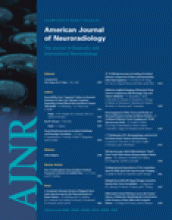Abstract
BACKGROUND AND PURPOSE: Patients with vertebral fractures containing intraosseous clefts may represent a distinct subgroup of vertebroplasty patients, yet the development of subsequent vertebral fractures in this population has not been explored. We tested the hypothesis that after vertebroplasty for intraosseous clefts, subsequent fractures would occur earlier and more frequently than after treatment of non–cleft-containing fractures.
METHODS: We retrospectively reviewed 362 patients treated with vertebroplasty for osteoporotic fractures. The location, frequency, and timing of subsequent fractures were compared between 2 subgroups: group 1, patients treated at fractures containing clefts, and group 2, treated patients without clefts. A vertebra-by-vertebra analysis was used to compare the relative risk and timing of subsequent fractures adjacent to vertebrae with or without clefts.
RESULTS: Group 1 included 63 patients treated at 65 vertebrae and group 2 included 250 patients treated at 399 vertebrae. Group 1 demonstrated a nearly twofold increased risk of subsequent fracture (odds ratio [OR], 1.90; 95% confidence interval [CI], 1.04–3.49, P = .037). At the vertebral level, the relative risk of subsequent fracture was 2.02 (95% CI, 1.46–2.58; P = .013) times greater adjacent to a treated cleft. Fractures adjacent to any treated level occurred significantly sooner than nonadjacent fracture (P = .0004). The presence of a cleft was not significantly associated with the timing of subsequent fractures.
CONCLUSIONS: Patients with osteoporotic vertebral fractures containing clefts are at increased risk for subsequent fractures and treatment of these clefts is associated with increased rates of adjacent fracture. There is no significant difference in the timing of subsequent fractures based on the presence of a cleft.
- Copyright © American Society of Neuroradiology












